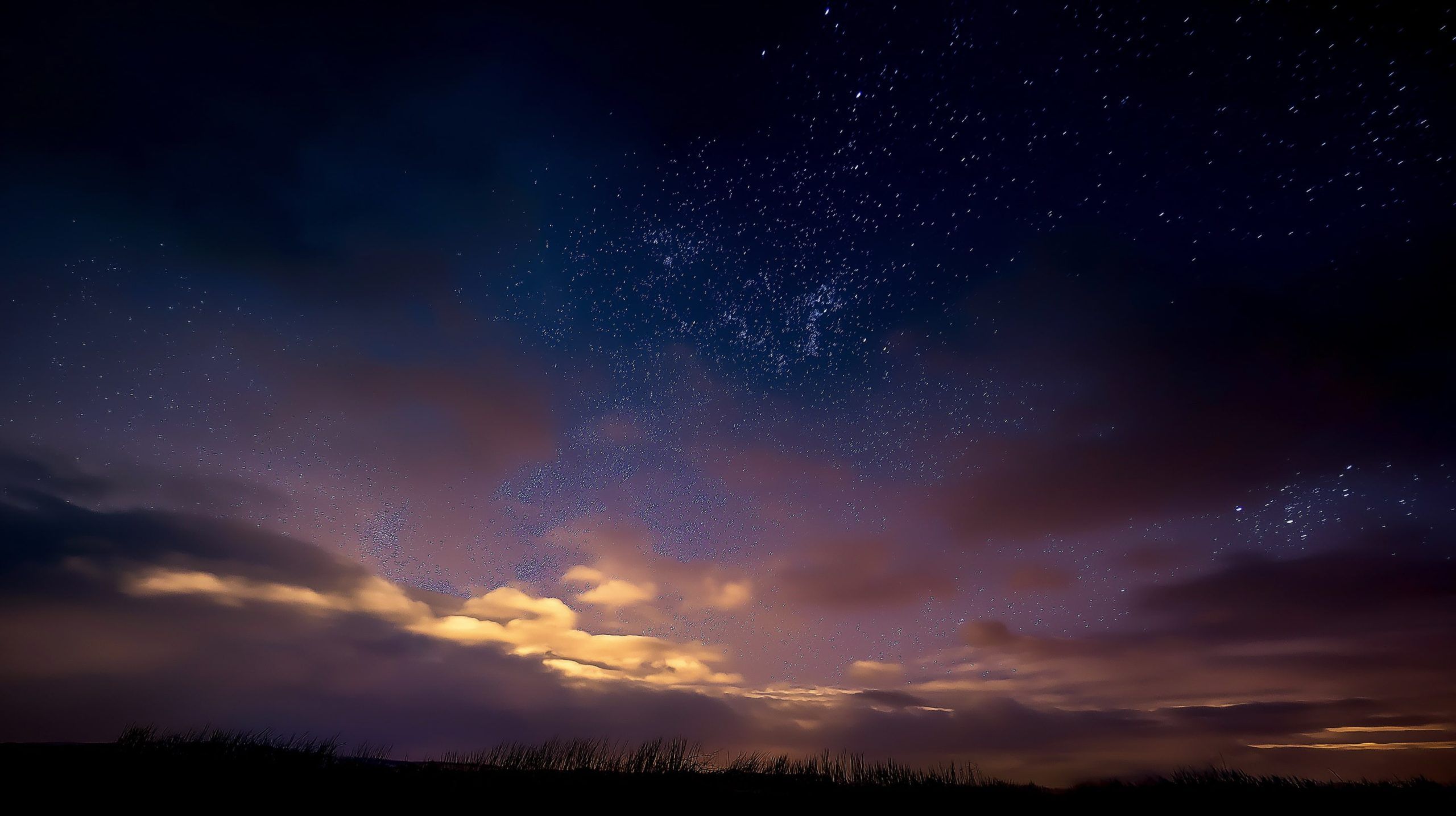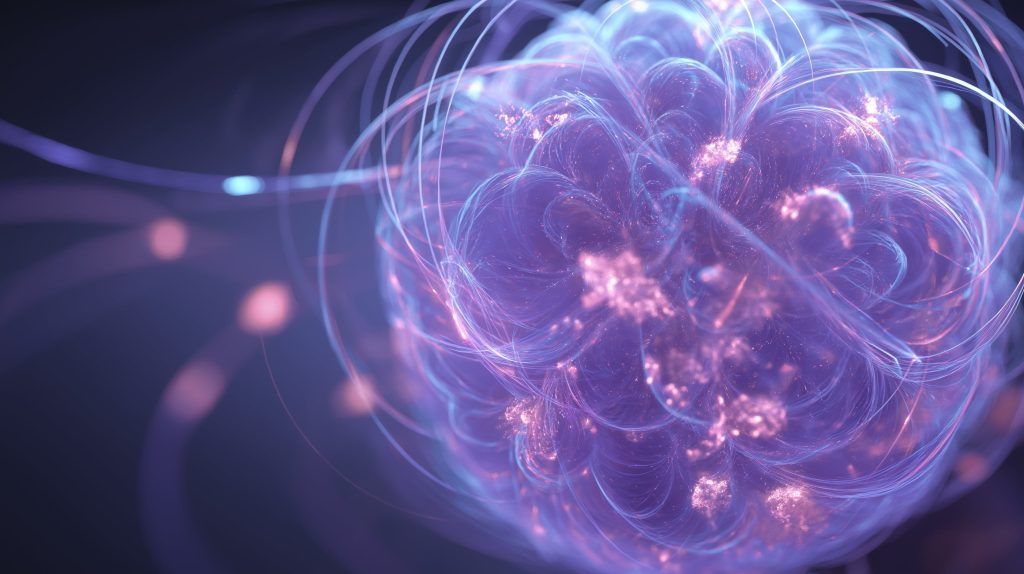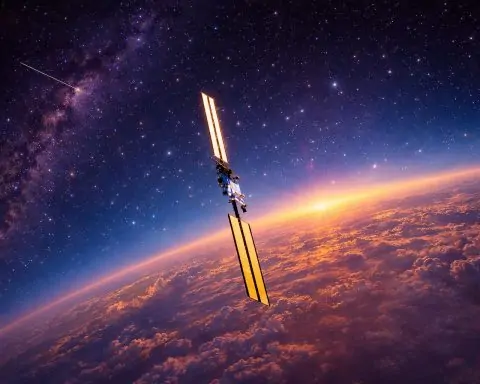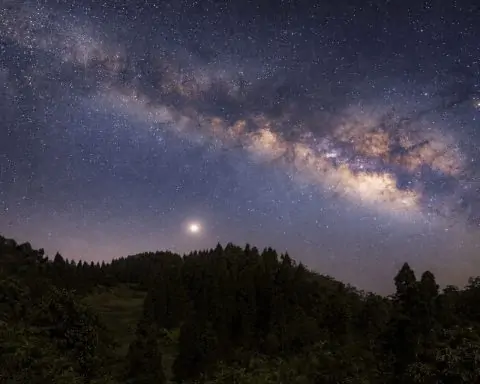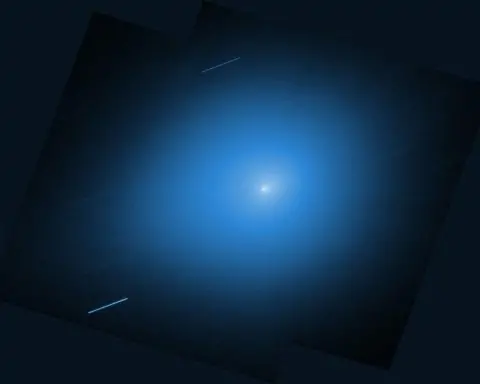- On Aug 3–4, 2025, the Perseid meteor shower is active with after-midnight rates of about a dozen meteors per hour under dark skies, though the peak on Aug 12–13 could reach about 100 meteors per hour in ideal conditions.
- The Southern Delta Aquariids, peaked July 29–30 and active until Aug 12, produce about 25 meteors per hour at best, with observers in the Southern Hemisphere seeing them best.
- The Alpha Capricornids are active until Aug 12, typically yielding up to 5 meteors per hour but famed for slow, bright fireballs.
- NOAA forecasters expect quiet to unsettled geomagnetic conditions Aug 3, with isolated active periods (Kp around 4) on Aug 4 as a coronal-hole solar wind stream arrives.
- Saturn rises after 10:00 p.m. local time on Aug 3–4, sits about 20° above the eastern horizon at midnight with a visual magnitude near 0.8, and its rings are tilted to about 2.5 arcseconds thick.
- Titan’s shadow crosses Saturn’s cloud tops starting around 2:03 a.m. EDT on Aug 3 and lasts a few hours, a rare transit visible with a telescope.
- Neptune will lie very near Saturn in the sky on Aug 6, appearing in the same telescopic field; Neptune is magnitude 7.7 and about 4.5 billion kilometers away.
- Venus and Jupiter form a striking dawn conjunction in August, with closest approach on Aug 11–12 at about 1° apart; around Aug 4 they’re about 8° apart, with Venus at magnitude -4.3 and Jupiter at -2.0.
- The Moon is about 70% illuminated on Aug 3 and 80% on Aug 4, passes within 0.3° of Antares on Aug 3, and reaches the Sturgeon Moon full on Aug 9 at 3:55 a.m. EDT.
- SpaceX launched 28 new Starlink satellites on July 29 from Cape Canaveral, with another launch scheduled for Aug 3, 2025; a Starlink satellite train may be visible Aug 3–4, and SpaceX operates over 8,000 Starlink satellites (about 8,075 in operation) with newer satellites designed to be dimmer, while Iridium flares ended in December 2019.
Skywatchers, get ready! The nights of August 3 and 4, 2025 are packed with celestial spectacles – from meteors streaking through summer skies, to a potential aurora glow on the horizon, to a rare planetary meetup and a near-full “Sturgeon Moon.” Here’s your complete guide (with expert insights) to what to watch for and why these events are special:
Meteor Showers: Perseids & More Lighting Up the Night
Perseid Meteor Shower – Early Show: The famous Perseid meteors are already active and ramping up toward their mid-August peak [1]. While the Perseids will technically peak on August 12–13 with up to ~100 meteors/hour under ideal dark skies [2] [3], bright moonlight will spoil that peak this year. In fact, NASA notes the 84%-full Moon on peak night will wash out all but the brightest Perseids [4]. Don’t despair! Viewing conditions are actually better now, in early August, before the Moon gets too full. On the nights of Aug 3–4 you might catch a few to a dozen Perseids per hour after midnight under dark skies – not an intense storm, but enough “shooting stars” to thrill onlookers [5]. As always, the best strategy is to head out after midnight and give your eyes 15+ minutes to adapt. Lie back, face the general direction of Perseus (northeast sky), and scan for quick streaks of light. Patience pays off! You’ll likely see some fast, white meteor streaks – and perhaps an occasional fireball leaving a glowing trail.
- Why after midnight? That’s when Earth turns into the meteor stream head-on, dramatically boosting meteor counts. The Perseid radiant (in Perseus constellation) rises higher late at night, so more meteors are above the horizon [6].
- Moon interference: On Aug 3–4, the Moon is a waxing gibbous (about 70–80% illuminated) that sets shortly after midnight [7] [8]. That means early evening meteors will be drowned in moonlight, but after the Moon sets, the pre-dawn hours will be much darker – prime time for meteor hunting. By the peak nights next week, unfortunately, the Moon will be up almost all night. The Adler Planetarium notes that at the Perseids’ peak, “the waning-gibbous Moon rises shortly before 10:00 pm, so its glare will block fainter Perseid meteors… under moonlit and light-polluted skies, expect to see far fewer – maybe only a dozen or so per hour” [9]. In short, catch some Perseids now, before the nearly full Moon moves in!
- Other active showers: Early August also brings “background” meteors from two lesser-known showers. The Southern Delta Aquariids (peaked July 29–30) are still active until Aug 12 [10] [11]. These tend to be faint, medium-speed meteors (originating from Comet 96P Machholz) with a modest peak rate (~25 per hour at best) [12]. Post-peak, they might add a few extra streaks, especially for observers in the Southern Hemisphere where this shower is best seen [13]. There’s also the Alpha Capricornids, active until Aug 12 [14] [15]. This shower is weak in number (only up to ~5 per hour) but famous for slow, bright fireballs [16]. If you see a notably bright, leisurely meteor this week, it could be an Alpha Capricornid. Keep an eye out: these fireballs can trace all the way across the sky, leaving observers in awe.
Meteor Watch Tips: For any meteor viewing, find the darkest sky possible (away from city lights) and allow at least 20 minutes with no phone or bright lights to fully adapt your vision. Bring a reclining chair or blanket, face away from the Moon (put it at your back or block it behind a building/tree) [17], and just relax under the stars. Even with the Moon’s presence, a few bright Perseids should be visible each hour if skies are clear [18]. And remember, the Perseids are rich in fireballs – NASA notes this shower often produces more fireballs than others [19] – so you might witness one of those extra-bright meteors that elicit gasps from everyone watching! [20]
Aurora Borealis Alert: Mild Geomagnetic Storm Forecast
If you live in far northern latitudes, keep an eye on the northern sky late on Aug 3 and especially Aug 4 – the aurora borealis (Northern Lights) might pay a visit. Space-weather forecasters are monitoring a high-speed solar wind stream and a recent minor solar outburst that could brush past Earth around these dates [21] [22]. The NOAA Space Weather Prediction Center expects “quiet to unsettled” geomagnetic conditions Aug 3, but with a chance of isolated active periods (~Kp 4) on Aug 4 as a new coronal hole solar wind stream arrives [23] [24]. In plain language, that means we might get a minor geomagnetic storm (G0/G1 level), which could produce auroras visible in the high latitudes and possibly dipping into parts of the northern United States, Canada, and northern Europe if conditions maximize. This is far from the strongest aurora outbreak, but it’s worth a watch if you’re under dark skies up north. NOAA forecasters advise aurora hunters to watch late night into the early hours (around local midnight) for any faint green or red glows on the horizon [25] [26]. The aurora oval likely won’t reach too far south with a Kp ~4 event – but areas like the northern Great Lakes, New England, the Pacific Northwest, northern UK, Scandinavia, etc. could get a low-grade auroral display on the northern horizon if the solar wind conditions are favorable.
- Expert context: The Sun has been very active this year – solar Cycle 25 is approaching its peak, bringing more frequent solar flares and coronal mass ejections. In fact, the past year’s heightened aurora activity is directly due to this increase in solar storms [27]. (We’ve already seen auroras dip into unusually low latitudes multiple times in 2025!) The upcoming potential aurora on Aug 3–4 is expected to be minor in comparison – think gentle green ripples in the far northern sky, not the multi-color “aurora extravaganza” that stronger storms produce. As NOAA explains, a coronal hole high-speed stream can disturb Earth’s magnetic field just enough to cause periods of geomagnetic “active” conditions (a step below a full storm) [28] [29].
- Aurora viewing tips: If you’re in a potential aurora zone, check the Kp index in the evening. A Kp of 4 or 5 means auroras could be visible at least low on the horizon for ~50° N geomagnetic latitudes (think Seattle, Calgary, London). If a surprise stronger burst pushes Kp to 6 or 7, auroras could come much farther south. One convenient tool is NOAA’s Aurora 30-minute forecast map, which shows the auroral oval in real time [30]. Find a dark location with a clear northern view. The Northern Lights typically peak between 10 p.m. and 2 a.m. local time [31]. Look for a diffuse greenish glow or faint pulsations; auroras often start subtle to the untrained eye. Long-exposure photos (even a smartphone on Night Mode) can help confirm if that grayish cloud is actually the aurora – the camera will reveal the green color if it’s there. And of course, the further from city lights, the better your chances to witness this delicate phenomenon [32].
Fun fact: Those shimmering curtains of light are literally solar particles colliding with Earth’s atmosphere. As NASA vividly puts it, during a CME “the sun ‘burps’ out huge bubbles of electrified gas… The particles then interact with gases in the atmosphere, resulting in beautiful displays of light in the sky” [33] [34]. The green and red aurora hues come from oxygen atoms, while nitrogen produces blue and purple tones [35] [36]. So if you see the sky faintly glowing green this week, you’re essentially watching a solar wind neon sign, painted by oxygen ~100 miles overhead!
Planetary Highlights: Late-Night Saturn & Morning Venus-Jupiter Show
Several planets are putting on a show for Aug 3–4 – some in the evening, some before dawn. Here’s what to look for:
- Saturn Shines All Night: The ringed planet Saturn is reaching prime time, rising earlier each night as it heads for opposition next month. On Aug 3–4, Saturn rises shortly after 10:00 p.m. local time, coming up in the east in the constellation Pisces [37]. By midnight it’s about 20° above the horizon in the eastern sky [38] – you’ll spot it as a steady, golden “star” of magnitude ~0.8, outshining most stars in that area [39]. Unlike twinkling stars, planets shine with a steady light. Saturn’s steadiness and gentle yellow hue will help you identify it. No telescope is needed to appreciate Saturn’s presence, but if you do have access to a telescope or even good binoculars, this is a must-see object right now. Saturn’s rings are currently tilted almost edge-on to Earth – astronomers note the rings’ narrow profile is only about 2.5 arcseconds thick as seen from our viewpoint [40]. Through a telescope the rings look like a thin line cutting across Saturn’s disk (a very different sight from just a few years ago when the rings were wide open). Catch them now, because Saturn’s rings won’t be this edge-on (and faint) again for 15 years! Also, around 4 AM (EDT) on Aug 3, Saturn will be involved in a special event for telescope observers: “Titan’s shadow” is crossing Saturn’s cloud tops [41] [42]. Saturn’s largest moon Titan is casting a tiny inky-black shadow onto Saturn, visible as a speck moving across the planet. This transit of Titan’s shadow starts around 2:03 AM EDT on Aug 3 and lasts a few hours [43]. It’s one of the last shadow transits this year (due to changing orbital geometry) [44]. Seeing it requires a telescope and some experience, but it’s a rare treat illustrating the dynamic nature of Saturn’s moons. Even Saturn’s smaller moons Enceladus and Tethys will be in on the action, transiting alongside Titan’s shadow (though they’re too faint/small to spot easily) [45]. If you miss it, Titan’s shadow will transit Saturn once more later in August, but after that the Sun-Saturn-Earth angle changes and these shadow crossings cease for a long while. Look just a degree north of Saturn (roughly two Full-Moon-widths) and you’ll hit Neptune. Of course, Neptune is invisible to the naked eye (magnitude 7.7), but both planets can appear together in a low-power telescope eyepiece right now [46]! In fact, Saturn and Neptune are approaching an exceptionally close conjunction: on August 6 they will be in the same telescopic field, aligned north-south [47]. This is a rare meetup of the farthest and second-farthest planets – one you can impress your friends with if you have a telescope handy: “See that faint bluish dot near Saturn? That’s Neptune, nearly 4.5 billion km away!” Saturn and Neptune won’t pair this tightly again for decades, so it’s a nifty two-for-one sight for dedicated observers. (Neptune, a small aqua-colored disk, will require at least binoculars or a telescope – but knowing it’s right there next to bright Saturn is half the fun.)
- Venus & Jupiter “Morning Star” Conjunction: Early risers are in for a brilliant show at dawn. The two brightest planets in our sky – Venus and Jupiter – are having a close encounter this month, appearing together in the east before sunrise [48] [49]. Throughout early August they’ve been drawing nearer each day, and on August 11–12 they will appear just ~1° apart, almost touching from our perspective [50] [51]. While Aug 3–4 is about a week before the closest approach, you can already observe Venus and Jupiter gradually closing the gap. Around 4:30–5:00 AM local time, look low in the east-northeast: blazing Venus (at magnitude –4.3) will be unmistakable about 20–30° above the horizon [52], and Jupiter (mag –2.0, a bit dimmer but still the second-brightest point of light) will be nearby. In early August, Venus sits above Jupiter, but watch each morning as the configuration changes [53]. By Aug 4, they’re roughly ~8° apart (about a fist-width at arm’s length). They’ll get a little closer each day – NASA says the two planets will “graze each other in the sky” on the 11th and 12th, appearing extremely close together [54]. No binoculars are needed to enjoy this planetary duo, but using them (or a telescope) will enhance the view – you might catch Jupiter’s moons or Venus’s gibbous phase. Fun note: Jupiter and Venus won’t actually pass super close in space (they’re millions of miles apart), but from Earth’s viewpoint they line up. Such Venus-Jupiter conjunctions happen regularly, but this one is a particularly striking pairing of the two brightest planets, easy to spot even in bright twilight. Best viewing time is about 60–30 minutes before your local sunrise, when the planets are high enough to see but before the sky grows too bright [55] [56]. Mark your calendar for the mornings of Aug 11 and 12 when they’ll be at their closest – it’s sure to generate buzz as the “planetary kiss” of 2025! Adding to the spectacle: a few days after their conjunction, a crescent Moon will join Venus and Jupiter. On August 19–20, a thin waning Moon will form a pretty triangle with the two planets in the dawn sky [57]. If you love sky photography, that will be a great opportunity for a picturesque shot at dawn (but we’re getting ahead – just something to look forward to after Aug 3–4).
- What about Mars and Mercury? Those two are hiding near the Sun this month. Mars is currently very far from Earth (on the opposite side of the Sun) and consequently at its faintest of the year [58]. It hovers low in the west at dusk, but don’t expect much – NASA notes Mars now appears “about as bright as the brightest stars in the Big Dipper” [59], which is fairly modest. (In other words, Mars definitely won’t be rivaling the Moon’s brightness – more on that myth later!) Unless you have very clear skies and know exactly where to look, Mars will likely be lost in the twilight glow after sunset. Mercury is also a tough catch – it’s nearing its superior conjunction with the Sun and is not easily visible in early August. It will re-emerge later in August very low in either the sunset or sunrise sky (Mercury’s appearances are always brief). So for Aug 3–4, focus on Saturn at night and Venus/Jupiter at dawn – those are the showstoppers.
Moon and Stars: Bright “Sturgeon Moon” & Summer Constellations
The Moon will be a prominent player on Aug 3–4. It’s waxing gibbous, on its way to the Full “Sturgeon Moon” later in the week. In fact, the Moon is ~70% illuminated on Aug 3 and ~80% on Aug 4 [60] [61], beaming brightly in the south after sunset. It reaches official full Moon on August 9 at 3:55 a.m. EDT [62]. This Full Moon of August is traditionally called the Sturgeon Moon – a name from Native American lore, as large sturgeon fish were more easily caught in late summer [63] [64]. (Unlike 2024, which had a rare Blue Moon, August 2025 has only one full Moon, so no “Blue Moon” this month [65].) The Sturgeon Moon will be the third of four supermoons in 2025 [66], meaning it’s a bit closer and brighter than average, though the difference is subtle to the eye.
Moon near Antares (Aug 3): On Sunday night Aug 3, the gibbous Moon makes a lovely close approach to Antares, the red-orange alpha star of Scorpius. Around 10 p.m. EDT, the Moon passes within 0.3° of Antares – so close that in parts of the eastern U.S., the star will almost graze behind the Moon (and in some locales further south, the Moon might actually occult Antares briefly) [67]. For most casual observers, it means you’ll see a bright Moon with a reddish “star” right next to it – a striking visual pairing you can enjoy without any optics. Tip: Use binoculars (careful to wait until after sunset!) to better see Antares’s color next to the Moon. Antares shines at about magnitude +1.1 [68], so it’s one of the brighter stars, but you might need binoculars to pierce the moonlight glare. Observers on the U.S. East Coast can catch the Moon and Antares extremely close together in darkness around 10–11 pm [69]. Further west, you’ll still see them near each other, though the gap will widen slightly with time. It’s still a beautiful sight – no special equipment required, just look toward the southwestern sky in Scorpius [70].
Why is Antares special? Antares is a massive red supergiant star – the “heart” of the Scorpion. Its ruddy hue is due to its cooler surface temperature and advanced age. In fact, Antares is nearing the end of its life and could go supernova (explode) in the next few million years [71]. When it does, it will briefly rival the Moon in brightness! But for now, it glows with a steady ginger-colored light. If you notice the color difference between bluish-white stars and orange Antares, you’re seeing stellar temperatures with your naked eyes – a fun bit of impromptu astrophysics. The Moon-Antares pairing on Aug 3 is a great opportunity to point out this red giant to friends and share its fate as a future supernova [72].
Summer Constellations & Milky Way: With August comes earlier nightfall (sunset ~8:10 pm local time) [73] [74] and the rich starfields of the summer sky. Once the Moon sets after midnight, the Milky Way’s glow becomes visible running from south to north. Directly overhead you’ll find the iconic Summer Triangle – the three bright stars Vega, Deneb, and Altair. By around 10 pm, brilliant Vega (magnitude 0.0) in the constellation Lyra is ~80° high (almost at zenith) for mid-northern latitudes [75]. Deneb (in Cygnus) and Altair (in Aquila) form the other points of the Triangle. Even in moonlight, these bright stars are easy to see. Take a moment on these nights to trace the outline of Scorpius in the southwest (with Antares as its heart) and Sagittarius (due south) whose “Teapot” asterism pours into the Milky Way. Short summer nights mean you should make the most of your stargazing time – by around 4–5 am, dawn will start encroaching.
Deep-sky suggestion: If you have binoculars or a small telescope, August offers many treasures. One highlight is the Dumbbell Nebula (M27) in the constellation Vulpecula, near the Summer Triangle. NASA’s skywatching guide notes M27 is “one of the easiest planetary nebulas to observe,” located high overhead in the early night [76]. Through binoculars it appears as a small hazy patch; a telescope reveals its hourglass (dumbbell) shape – the remnants of a dying star blowing off its outer layers. Also, globular clusters abound – try finding M13 in Hercules or M56 in Lyra (M56 sits roughly between the stars Albireo and Gamma Lyrae) [77]. These are spherical swarms of ancient stars, and even a modest scope will begin to resolve their glittering cores. While the Moon’s brightness will wash out faint objects early at night, after the Moon sets, keen observers can hunt down these deep-sky gems against a darker backdrop. If you’re new to finding them, a star chart or astronomy app can help guide you – and observing from a dark site is key.
Finally, note that August is also “Saturn season” for telescopes – Saturn will reach opposition (its closest approach to Earth this year) in late August/early September, so it’s already big and bright. Many observatories and astronomy clubs host public Saturn viewings around this time. If you’re near an observatory, check if they have an open night on Aug 3–4; seeing Saturn’s rings live through a telescope is an awe-inspiring experience that never gets old.
Satellites & Space Station: Manmade Sights in the Sky
Celestial phenomena aren’t limited to natural objects – human-made satellites are also putting on a show these nights:
- ISS Flyovers: The International Space Station (ISS), humanity’s bright outpost orbiting ~250 miles up, can often be spotted gliding across the sky. The ISS looks like a very bright, fast-moving star (often rivaling Jupiter in brightness) that takes a few minutes to cross the sky. Sightings occur either in the hour or two after sunset or before sunrise, when the station is overhead and still catching sunlight against a dark sky [78]. In early August 2025, many locations have morning passes of the ISS. For example, if you’re up predawn watching Venus and Jupiter, you might also catch the ISS sailing by. To know when and where to look, use NASA’s Spot the Station service [79] or apps like Heavens-Above. NASA’s site will tell you exact times and directions for your city – a typical ISS pass might appear in the west, climb high overhead, and disappear in the east as it enters Earth’s shadow. It doesn’t blink (like planes do); it shines with a steady white light. On Aug 3–4, check your local listings – there may be a bright ISS flyover before dawn in your area. Watching the ISS is a great family activity; it’s amazing to realize astronauts are up there on that very point of light, traveling 17,000 mph!
- Starlink “Satellite Train”: There’s a decent chance you’ll see an odd sight in the sky this week that has generated a lot of buzz – a line of lights moving in a row. Don’t panic, it’s not a UFO convoy! It’s a freshly launched batch of SpaceX Starlink satellites, which often produce a striking “satellite train” shortly after deployment. In fact, SpaceX just lofted 28 new Starlink satellites on July 29 from Cape Canaveral [80], and another launch is scheduled for Aug 3 [81]. That means on the nights following launch (including Aug 3–4), skywatchers in many regions could witness the new satellites streaking across the sky in formation. Space.com describes the sight as a “dazzling spectacle” of satellites “resembling a string of bright, evenly spaced lights” moving together [82]. These Starlink trains are often reported by surprised observers and sometimes mistaken for fleets of UFOs [83] – until the phenomenon is explained. Each “train” slowly disperses over days to weeks as the satellites raise their orbits, but right after launch they’re clustered. If a Starlink launch occurs on Aug 3, the best time to see the resulting train will be 12–36 hours post-launch, during the early morning or late evening twilight (when the satellites are illuminated by the Sun but the ground is dark). They usually appear as bright dots moving one after the other along the same track. It can be jaw-dropping to see dozens of lights marching in unison through the stars. Keep an eye on social media too – local astronomy groups often post heads-ups if a Starlink train will be visible in your area. You can also check websites like FindStarlink.com, where you can enter your location and get predictions for when Starlink satellites will pass by [84]. Context: As of August 2025, SpaceX has put over 8,000 Starlink satellites into orbit (with around 8,075 still in operation) [85], forming a mega-constellation providing internet service. Regular Starlink launches (sometimes multiple per month) mean these “trains” have become a fairly common sight [86]. They’re fascinating to watch, but also controversial – astronomers worry about their impact on night-sky visibility [87]. SpaceX has been working on mitigating brightness (darker coatings, sunshades), so newer Starlinks are generally dimmer once they reach operational orbit [88]. But immediately after launch, when orbiting low, they can be very bright. If you catch one of these events, enjoy it – it’s a glimpse of both the future of technology and a new challenge for astronomy.
- Iridium Flares (R.I.P.): Seasoned skywatchers might recall the famous Iridium satellite flares – brilliant, quick flashes of light caused by the reflective antennas of Iridium communications satellites catching the Sun. These could outshine Venus, and they were once a staple of satellite observing (with 2–4 visible most nights) [89] [90]. However, if you’re looking for Iridium flares in 2025, you’ll likely be disappointed: the classic Iridium flares era has ended. The original constellation of Iridium satellites was retired and deorbited as new-generation satellites took over, and the final first-generation Iridium sat reentered in December 2019 [91]. Translation: those predictably bright flares are no more. *“After more than 20 years, the Iridium flares era is ended,” noted one satellite-tracking site when the last old Iridium fell from orbit [92]. The new Iridium NEXT satellites have a different design and don’t produce the same intense glints. That said, satellite flares in general still happen – many other satellites (even the ISS’s solar panels) can briefly reflect the Sun. But none are as regularly stunning as the classic Iridiums were. So if you see a sudden flash in the sky these days, it’s either a tumbling rocket body, a satellite panel glint, or perhaps an airplane – not an Iridium flare. It’s a little sad for those of us who planned observing sessions around catching those flares, but time marches on.
How to track satellites: There are great tools and apps for satellite enthusiasts. Apart from NASA’s Spot the Station for the ISS [93], you can use apps like Heavens-Above, Stellarium, or Sky Guide which will show you real-time positions of satellites and predict flares. Space.com also recommends using the FindStarlink site for Starlink timings, and checking out some of the best stargazing apps that include satellite tracking features [94] [95]. If you’re really keen, you can even join communities that observe and report satellite sightings – a fun way to contribute to citizen science.
Trending Space Myths & Rumors – Busted
Whenever sky events get buzz, misinformation isn’t far behind. Let’s clarify a couple of viral claims circulating online as we head into these celestial events:
- “The whole world will go dark on Aug 2” – FALSE. In late July a viral social media claim emerged, suggesting that on August 2, 2025, Earth would experience a 6-minute global blackout. This is not true [96]. No, there was no mysterious alignment or cosmic event plunging us into darkness. (Some internet posts misinterpreted news of a future solar eclipse.) In reality, nothing unusual happened on Aug 2 this year besides the normal sunset! The rumor likely sprang from confusion with an upcoming “eclipse of the century” on Aug 2, 2027, when a very long total solar eclipse will occur [97]. But that eclipse, spectacular as it will be, still won’t make the whole world go dark – only the narrow eclipse path experiences total darkness, not the entire globe. Bottom line: Be skeptical of sensational “NASA confirms worldwide darkness” type of claims. NASA never announced any August 2025 blackout – because there isn’t one [98].
- “Mars will appear as big as the Moon!” – Nope. Every summer it seems this old hoax rises again. You might see a meme or TikTok claiming “Mars will be as large as the full Moon in the sky on [a given date]!” This is a 100% myth that originated from a misreading of an email back in 2003. Rest assured, Mars never appears anywhere near the size of the Moon to the naked eye – not on Aug 27, 2025, not ever. In fact, right now Mars is extremely dim and distant. As noted above, Mars is currently only about magnitude +1.8 (very modest) and sits low in twilight [99]. You’d need a telescope at high magnification to make Mars look Moon-sized in your view, and even that would be a tiny zoomed-in image. So if you come across dramatic claims online about double moons or gigantic Mars, you can safely dismiss them. Astronomers uniformly debunk this rumor every year. Enjoy Mars for what it is – a small reddish dot you can point out to friends – but don’t expect a second Moon.
- Other chatter: You may also hear doomsayers hyping planetary alignments or citing the Venus-Jupiter conjunction as an omen. There is no adverse effect on Earth from planets appearing close together – it’s purely a line-of-sight coincidence. In fact, NASA encourages you to enjoy the Venus-Jupiter pairing as a beautiful sight [100], not fear it. And if you see folks on social media attributing personal feelings or wild weather to Mercury retrograde or other astro-myths, remember: those are not backed by science. As one astronomer quipped, “the only thing Mercury in retrograde reliably affects is the volume of astrology posts on Instagram.”
On the positive side, some trends are worth following: for instance, many people on TikTok and YouTube are sharing Perseid meteor shower viewing tips or Saturn photography hacks. Just be sure to get your info from reputable sources (NASA, observatories, experienced astronomers) for the real scoop. We’ve linked several source data and maps above to help you plan your skywatching.
In summary, the next two nights offer a bit of everything for sky enthusiasts. To recap Aug 3–4 highlights: a waxing gibbous Moon lighting the early night (and cozying up to Antares on 8/3) [101], increasing Perseid meteors after midnight (best when the Moon sets) [102], a possible aurora glimmer for northerners on 8/4 if a solar wind stream delivers [103], Saturn holding court late-night with its rings and moons (don’t miss it in a telescope if you can) [104] [105], and Venus and Jupiter adorning the dawn – a preview of their upcoming conjunction [106]. Add the human-made wonders – ISS flybys and maybe a Starlink satellite train – and you’ve got plenty to look for.
It’s a fantastic time to share the night sky with others. Consider heading to a local park or astronomy club event. Many observatories host public nights during the Perseids; it can be fun to hear experts explain these phenomena in person. And if clouds spoil your view on one night, try the next – most of these sights (barring a brief aurora or satellite pass) will have multiple opportunities. Above all, enjoy the sense of scale and wonder these celestial events provide. As you watch a meteor flash or trace Saturn’s rings, you’re participating in an age-old human experience – marveling at the night sky. Clear skies and happy skywatching!
Sources: Sky & Telescope, NASA, NOAA, EarthSky, Space.com, Adler Planetarium, American Meteor Society [107] [108] [109] [110] [111] [112] (and more – all linked inline above for reference). Enjoy the show!
References
1. www.space.com, 2. www.space.com, 3. www.space.com, 4. science.nasa.gov, 5. www.adlerplanetarium.org, 6. www.space.com, 7. www.astronomy.com, 8. www.astronomy.com, 9. www.adlerplanetarium.org, 10. www.amsmeteors.org, 11. www.amsmeteors.org, 12. www.amsmeteors.org, 13. www.amsmeteors.org, 14. www.amsmeteors.org, 15. www.amsmeteors.org, 16. www.amsmeteors.org, 17. www.adlerplanetarium.org, 18. science.nasa.gov, 19. www.foxweather.com, 20. www.foxweather.com, 21. earthsky.org, 22. www.sidc.be, 23. www.sidc.be, 24. www.sidc.be, 25. economictimes.indiatimes.com, 26. economictimes.indiatimes.com, 27. economictimes.indiatimes.com, 28. www.sidc.be, 29. www.sidc.be, 30. www.spaceweather.com, 31. economictimes.indiatimes.com, 32. economictimes.indiatimes.com, 33. www.beaumontenterprise.com, 34. www.beaumontenterprise.com, 35. www.beaumontenterprise.com, 36. www.beaumontenterprise.com, 37. www.astronomy.com, 38. www.astronomy.com, 39. www.astronomy.com, 40. www.astronomy.com, 41. www.astronomy.com, 42. www.astronomy.com, 43. www.astronomy.com, 44. www.astronomy.com, 45. www.astronomy.com, 46. www.astronomy.com, 47. www.astronomy.com, 48. science.nasa.gov, 49. science.nasa.gov, 50. science.nasa.gov, 51. www.foxweather.com, 52. science.nasa.gov, 53. www.adlerplanetarium.org, 54. science.nasa.gov, 55. www.skyatnightmagazine.com, 56. www.adlerplanetarium.org, 57. science.nasa.gov, 58. www.astronomy.com, 59. science.nasa.gov, 60. www.astronomy.com, 61. www.astronomy.com, 62. www.foxweather.com, 63. www.foxweather.com, 64. www.foxweather.com, 65. www.foxweather.com, 66. www.foxweather.com, 67. www.astronomy.com, 68. www.astronomy.com, 69. www.astronomy.com, 70. www.astronomy.com, 71. www.astronomy.com, 72. www.astronomy.com, 73. www.astronomy.com, 74. www.astronomy.com, 75. www.astronomy.com, 76. science.nasa.gov, 77. www.astronomy.com, 78. www.nasa.gov, 79. www.nasa.gov, 80. spaceflightnow.com, 81. www.spacex.com, 82. www.space.com, 83. www.space.com, 84. www.space.com, 85. www.space.com, 86. www.space.com, 87. www.space.com, 88. www.space.com, 89. en.wikipedia.org, 90. en.wikipedia.org, 91. catchtheiridium.com, 92. catchtheiridium.com, 93. www.nasa.gov, 94. www.space.com, 95. www.space.com, 96. www.space.com, 97. www.space.com, 98. www.space.com, 99. science.nasa.gov, 100. science.nasa.gov, 101. www.astronomy.com, 102. www.adlerplanetarium.org, 103. www.sidc.be, 104. www.astronomy.com, 105. www.astronomy.com, 106. science.nasa.gov, 107. www.astronomy.com, 108. science.nasa.gov, 109. www.sidc.be, 110. www.space.com, 111. www.adlerplanetarium.org, 112. www.space.com
